Salmon is one of the healthiest foods you can eat — packed with omega-3 fatty acids, complete protein, and vital nutrients that protect your heart, brain, and body.
Eating salmon just two to three times a week has been proven to lower heart disease risk, improve cognitive function, support weight management, and boost overall longevity.
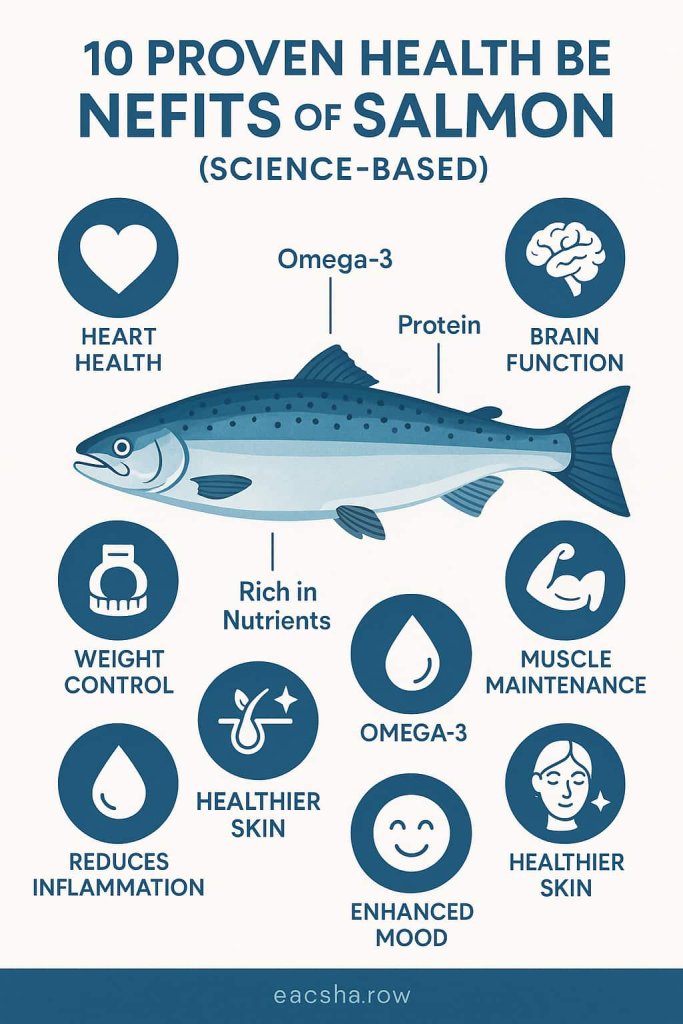
Understanding the science behind salmon’s benefits helps you make smarter nutrition choices and use this superfood effectively. In this guide, you’ll learn the top 10 evidence-based health benefits of salmon, ideal serving recommendations, and key precautions to maximize its nutritional power.
What Is Salmon? (Overview and Nutritional Profile)
Salmon is an oily fish found in both freshwater and saltwater, belonging to the Salmonidae family. The most common edible types include Atlantic, Sockeye, Coho, Chinook (King), and Pink salmon.
Nutritional Facts (per 100 g cooked Atlantic salmon):
- Calories: 206
- Protein: 22 g
- Total Fat: 12 g (including ~2.5 g omega-3s)
- Vitamin D: 570 IU (71% DV)
- Vitamin B12: 3.2 µg (133% DV)
- Selenium: 36 µg (65% DV)
- Potassium: 363 mg
(Source: USDA FoodData Central, 2024)
These nutrients make salmon a nutrient-dense powerhouse that supports nearly every organ system in the body — from cardiovascular to cognitive health.
10 Proven Health Benefits of Salmon (Science-Based)
Salmon is a powerhouse of nutrition, offering a unique balance of high-quality protein, omega-3 fats, antioxidants, and essential vitamins that contribute to nearly every aspect of health.
Below are ten science-backed health benefits explaining why regular salmon consumption should be a core part of your weekly diet.
1. Excellent Source of High-Quality Protein

Salmon provides all nine essential amino acids necessary for muscle repair, enzyme formation, and immune support. A 100-gram cooked serving delivers around 22 grams of complete protein while being relatively low in calories (about 200 kcal).
Protein from salmon is especially beneficial because it is easily digestible and contains a balanced amino acid profile that supports lean muscle development.
Research from the Harvard T.H. Chan School of Public Health confirms that consuming protein-rich fish like salmon helps regulate appetite, preserve muscle mass, and promote healthy aging.
Why it matters:
- Maintains lean muscle mass and strength
- Aids post-exercise recovery
- Enhances metabolism and promotes satiety
Tip: Eat salmon 2–3 times a week to maintain optimal protein levels and muscle health.
2. Packed with Heart-Protective Omega-3 Fatty Acids
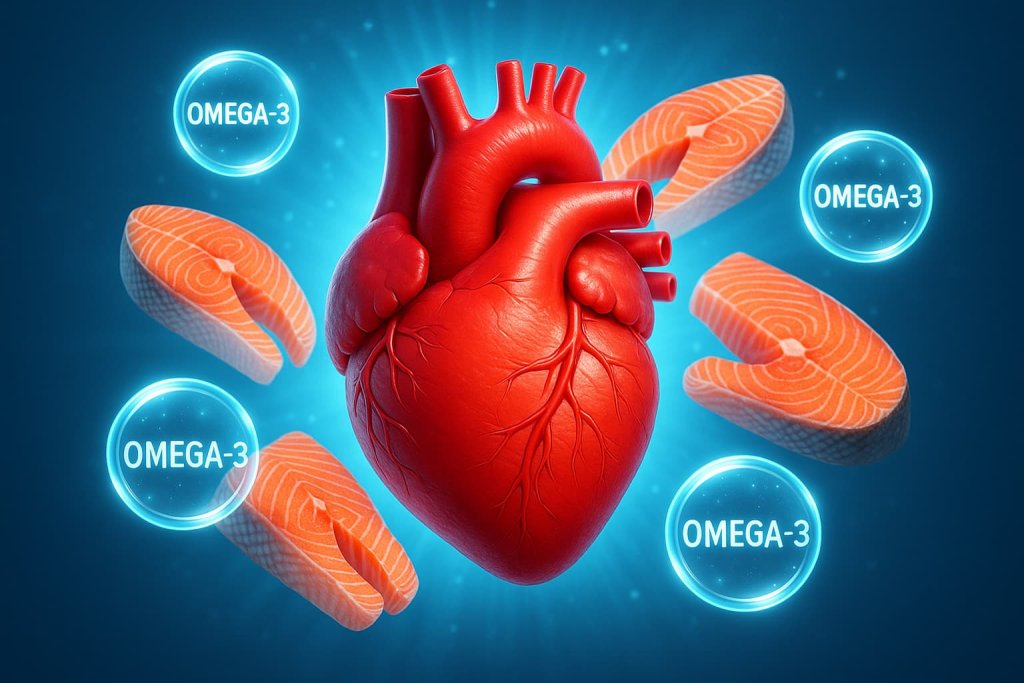
Salmon is one of the best natural sources of omega-3 fatty acids — particularly EPA (eicosapentaenoic acid) and DHA (docosahexaenoic acid). These long-chain fats are proven to lower triglycerides, stabilize heart rhythm, and reduce inflammation, thereby protecting cardiovascular health.
A 2023 Nutrients meta-analysis showed that people who consumed fatty fish at least twice per week had significantly lower risk of heart attacks and strokes compared to those who didn’t.
How it benefits your heart:
- Lowers blood pressure and triglycerides
- Reduces LDL cholesterol oxidation
- Enhances blood vessel flexibility and function
For more details, visit the American Heart Association’s official page on Omega-3 Fatty Acids.
3. Supports Brain Health and Cognitive Function
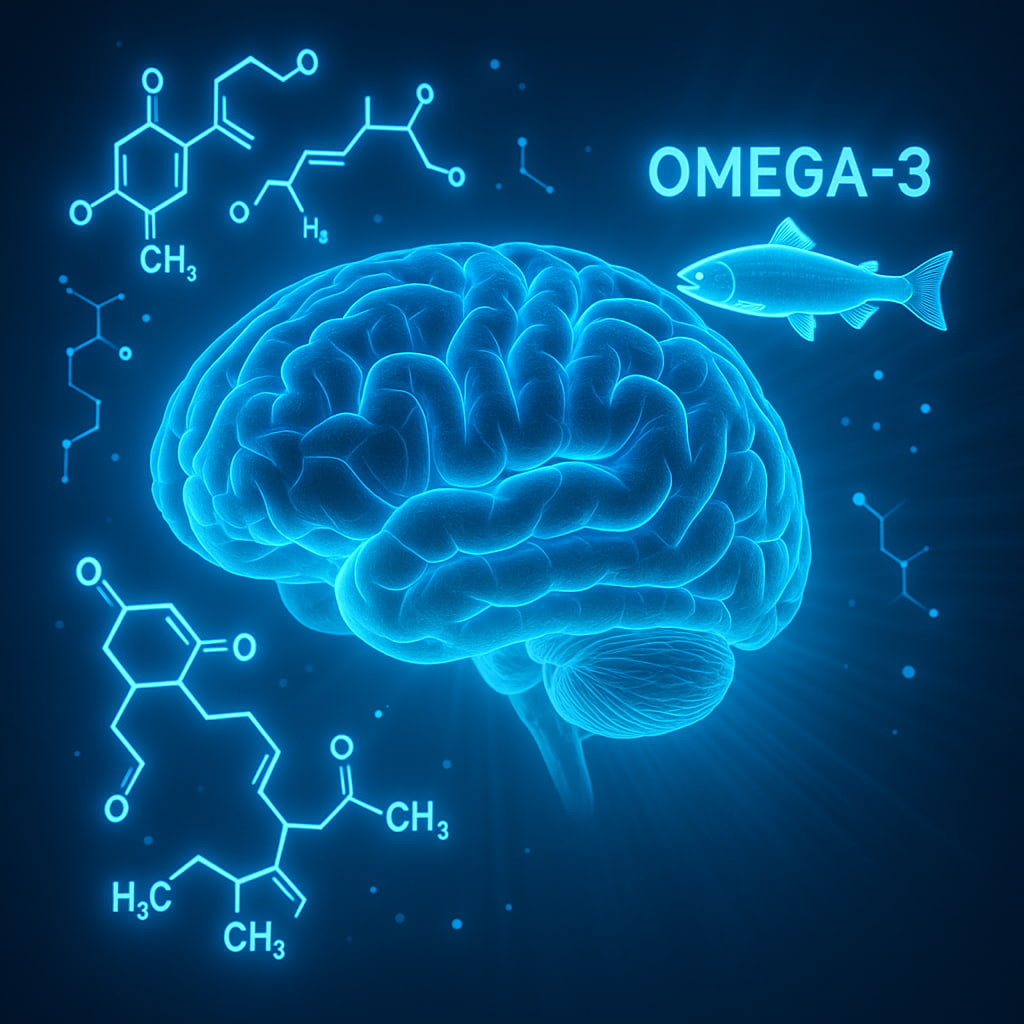
Your brain is made up of nearly 60% fat, much of it DHA — a vital omega-3 found abundantly in salmon. DHA supports neural communication, memory retention, and emotional regulation.
A 2024 study in Frontiers in Aging Neuroscience found that older adults with higher omega-3 intake from salmon had slower cognitive decline and better overall brain performance.
How it helps:
- Boosts memory, attention, and focus
- Protects neurons from oxidative stress
- May reduce risk of Alzheimer’s and dementia
Learn more at the Cleveland Clinic’s Health Benefits of Salmon.
4. Aids Weight Management

Despite its healthy fat content, salmon supports weight control due to its protein and omega-3 profile that enhances fullness hormones like leptin and GLP-1.
A 2022 Nutrition Research study found that individuals who ate salmon in calorie-controlled diets experienced greater fat loss and improved metabolic health compared to those who avoided it.
Why it helps:
- High protein boosts metabolism and satiety
- Omega-3s enhance fat oxidation
- Stabilizes blood sugar levels and reduces cravings
Tip: Choose grilled, baked, or steamed salmon — avoid frying to preserve nutrients and minimize extra calories.
5. Reduces Inflammation
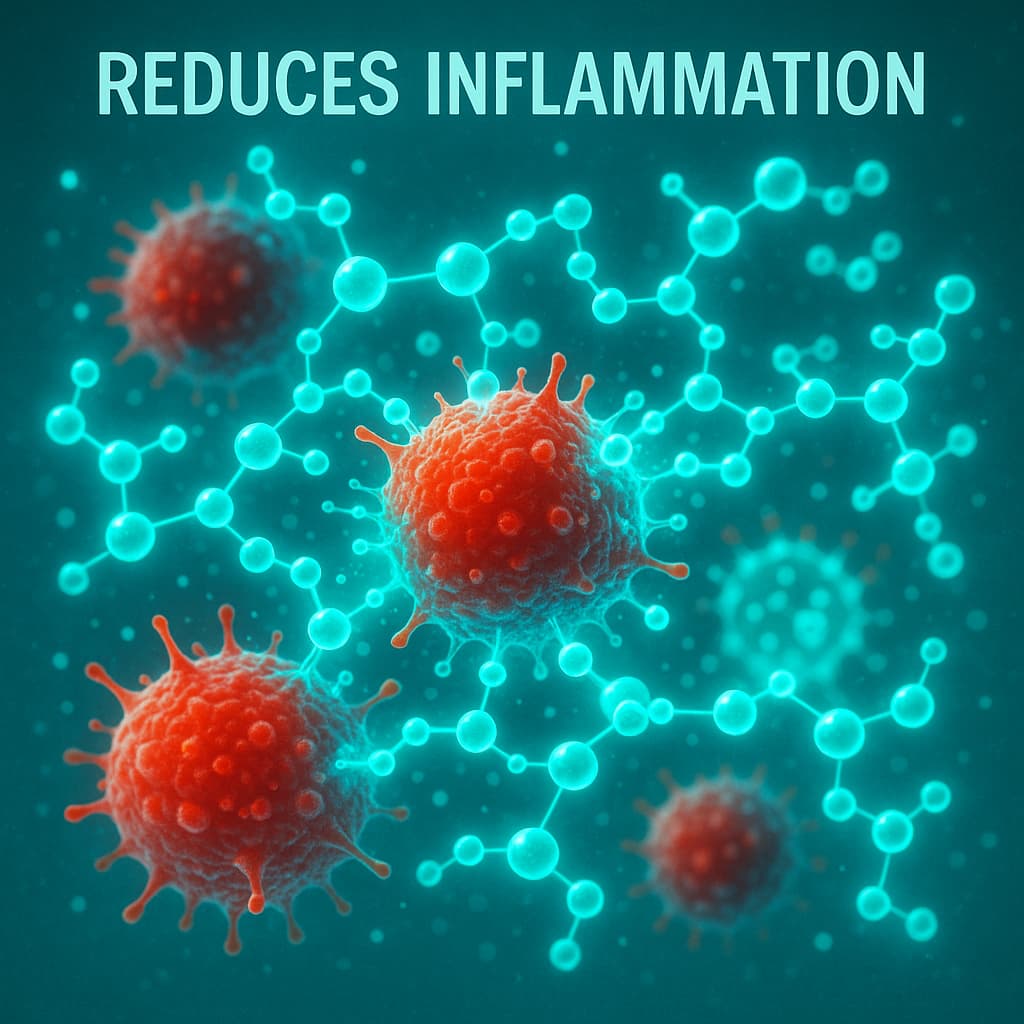
Chronic inflammation contributes to many diseases, including arthritis, diabetes, and heart disease. Salmon contains omega-3 fatty acids and the antioxidant astaxanthin, both of which help reduce inflammatory markers.
A 2024 Nutrients review reported that omega-3 supplementation lowered C-reactive protein (CRP) and other key inflammatory biomarkers.
Results:
- Less joint pain and swelling
- Improved blood vessel flexibility
- Lower risk of chronic disease
Read the full review in Nutrients Journal.
6. Promotes Eye Health

The DHA in salmon plays a structural role in the retina and protects against oxidative stress.
A report from the American Academy of Ophthalmology (2024) noted that people who eat omega-3-rich fish twice weekly have up to 30% lower risk of age-related macular degeneration (AMD).
Other eye benefits:
- Reduces risk of dry-eye syndrome
- Improves night vision and tear production
7. Strengthens Bones and Joints
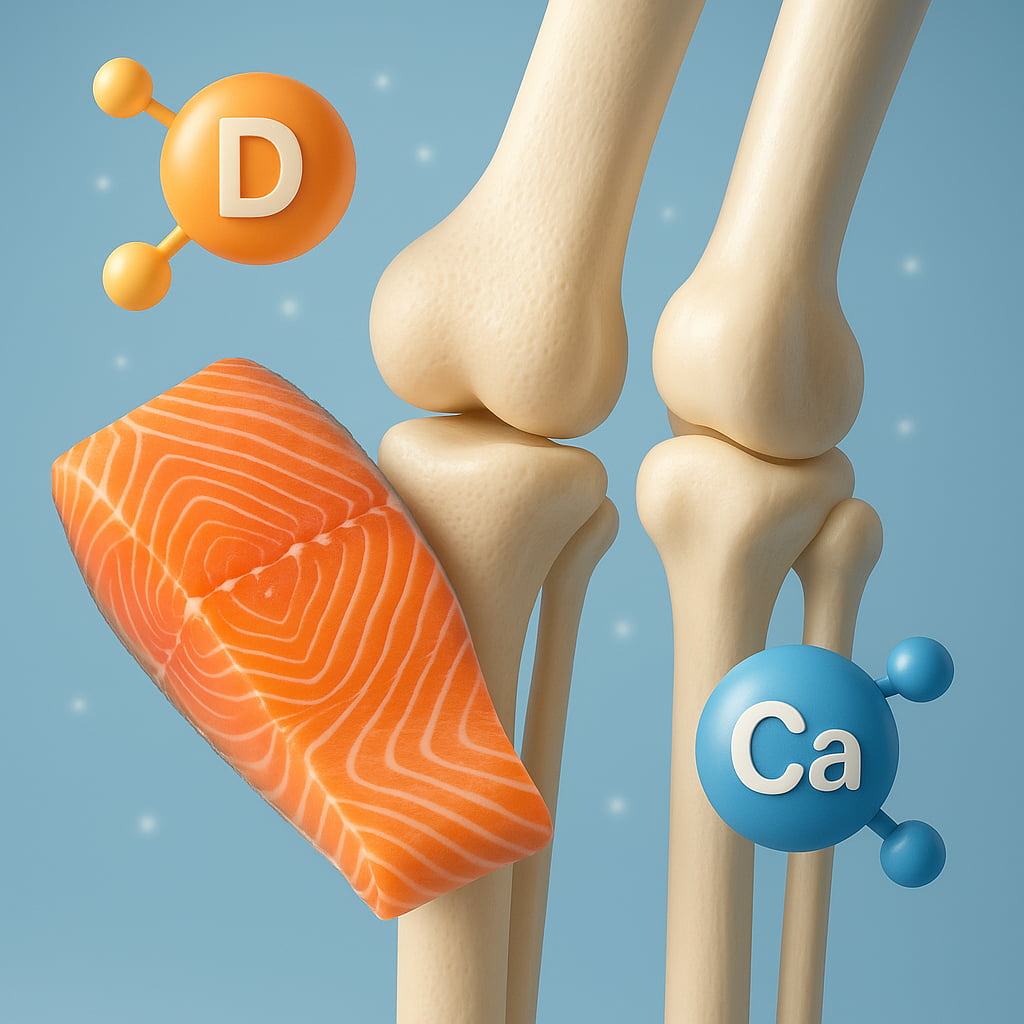
Salmon is rich in vitamin D, calcium, and omega-3s — nutrients that support bone density and joint flexibility.
One serving of salmon provides 70–80% of your daily vitamin D requirement, which aids calcium absorption and bone formation.
Regular intake also helps reduce symptoms of rheumatoid arthritis by lowering joint inflammation.
For reference, see the NIH Vitamin D Fact Sheet for Health Professionals.
8. Boosts Immune Function
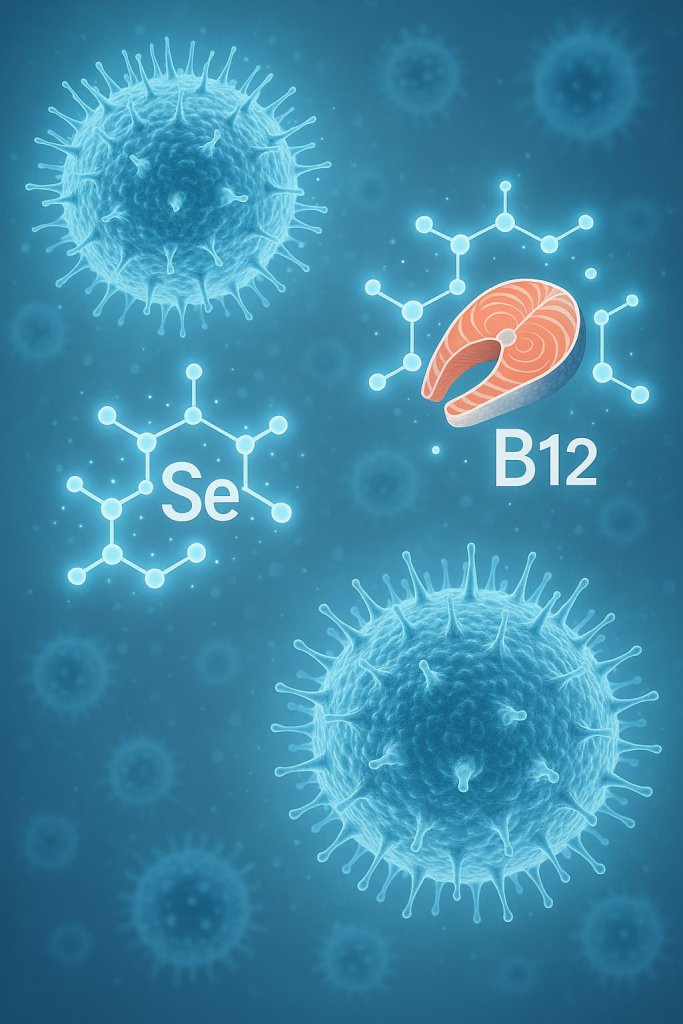
Salmon provides a potent mix of selenium, vitamin B12, and zinc, which support immune cell activity and antioxidant defense.
A 2023 Journal of Trace Elements in Medicine and Biology study found that selenium-rich foods like salmon enhance T-cell and antibody response, reducing infection risk.
Results:
- Stronger immune defense
- Faster recovery from illness
- Reduced oxidative stress and DNA damage
Explore more on PubMed Central – Selenium and Immunity.
9. Improves Skin and Hair Health

The pink-orange color of salmon comes from astaxanthin, a powerful antioxidant that neutralizes UV damage and promotes skin elasticity.
A 2023 Nutrients clinical trial found that people consuming salmon-derived astaxanthin had significant improvements in skin hydration and wrinkle depth within 12 weeks.
Bonus: Omega-3s nourish hair follicles, improve scalp circulation, and reduce dryness.
10. May Support Mental Health and Mood

Salmon’s omega-3s help balance neurotransmitters like serotonin and dopamine, improving mood regulation and emotional stability.
A 2023 JAMA Network Open meta-analysis found that higher omega-3 intake — especially EPA — was associated with a 17% lower risk of depression.
How it helps:
- Reduces anxiety and stress
- Improves focus and mood balance
- Supports long-term mental well-being
Read the full analysis on JAMA Network Open.
How to Eat Salmon for Best Results
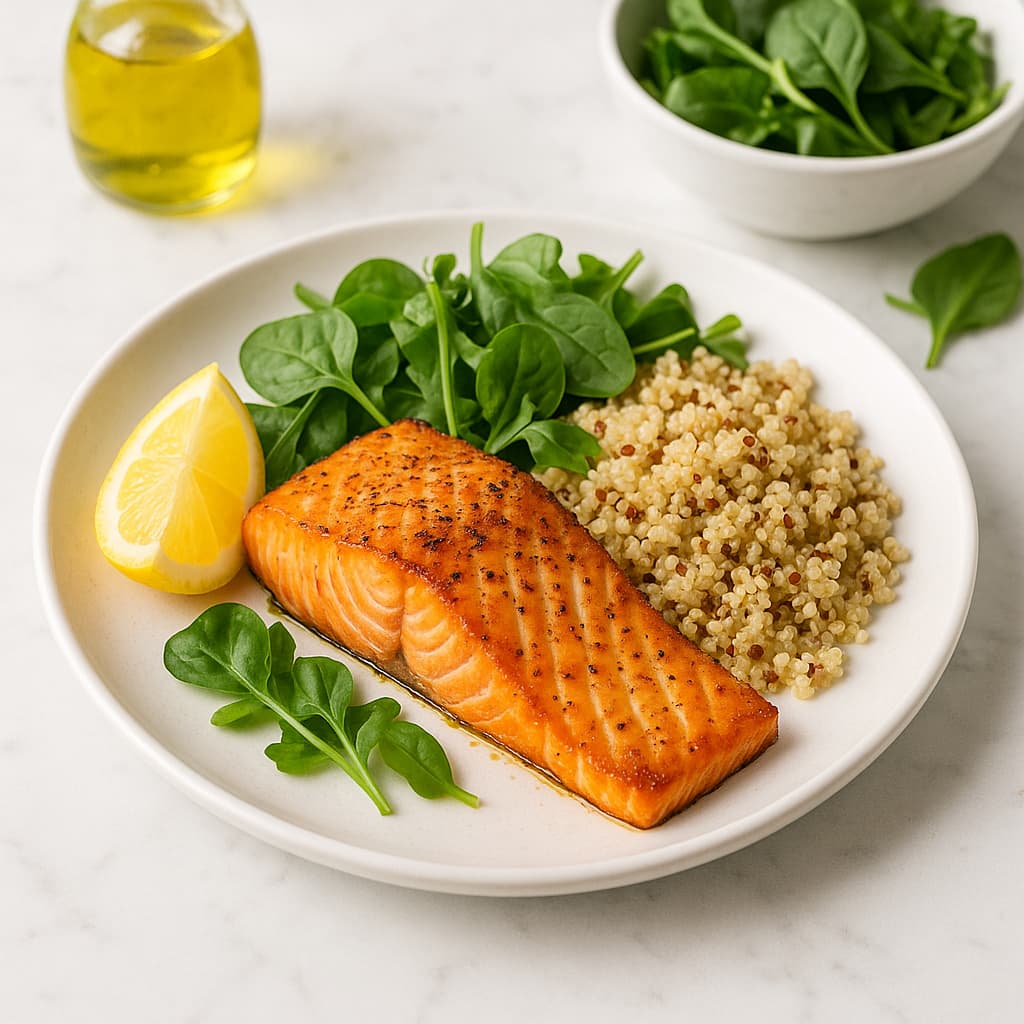
To enjoy the full nutritional and health benefits of salmon safely, it’s essential to know how much to eat, how to prepare it, and how to choose quality sources. The following guidelines align with recommendations from the American Heart Association (AHA) and Harvard T.H. Chan School of Public Health.
Ideal Serving Frequency
The AHA recommends eating at least two servings of fatty fish, such as salmon, per week — equivalent to about 3.5–4 ounces (100–120 g) per serving.
This amount provides adequate omega-3 fatty acids (EPA and DHA) to promote heart and brain health without exceeding safe mercury limits.
Source: American Heart Association – Fish and Omega-3 Fatty Acids
Best Cooking Methods
How you cook salmon directly impacts its nutritional value. Health experts recommend gentle cooking methods that preserve omega-3 content and minimize harmful compounds.
Best methods:
- Grilled or baked – Retains most healthy fats and flavors.
- Steamed or poached – Preserves delicate nutrients and moisture.
- Pan-seared – Acceptable if cooked in olive or avocado oil.
Avoid: Deep-frying or high-heat grilling that can oxidize omega-3s or introduce carcinogenic compounds (polycyclic aromatic hydrocarbons).
Healthy Pairings
Pair salmon with nutrient-dense, anti-inflammatory foods for a balanced meal:
- Leafy greens (spinach, kale, arugula)
- Complex carbs (quinoa, brown rice, sweet potatoes)
- Healthy fats (avocado, olive oil, nuts)
- Vitamin C–rich foods (lemon, bell pepper) to enhance iron absorption
A balanced plate ensures optimal nutrient synergy — supporting heart, brain, and metabolic health.
Wild vs. Farmed Salmon
- Wild-caught salmon (especially from Alaska or the Pacific) generally contains higher omega-3 levels, fewer calories, and less saturated fat.
- Farmed salmon may have slightly more omega-6 fats and can contain trace contaminants like PCBs (polychlorinated biphenyls) depending on farming conditions.
However, both types remain healthy choices if sourced responsibly. Look for labels such as “wild-caught,” “ASC-certified,” or “responsibly farmed.”
Safe Storage and Handling
- Refrigerate raw salmon (below 40°F / 4°C) and cook within 1–2 days of purchase.
- Freeze at 0°F (-18°C) for up to 3 months for best quality.
- Cook to an internal temperature of 145°F (63°C) to eliminate parasites and bacteria.
- Avoid cross-contamination by using separate utensils for raw and cooked fish.
Following these steps preserves freshness and reduces foodborne illness risks.
Possible Side Effects and Precautions
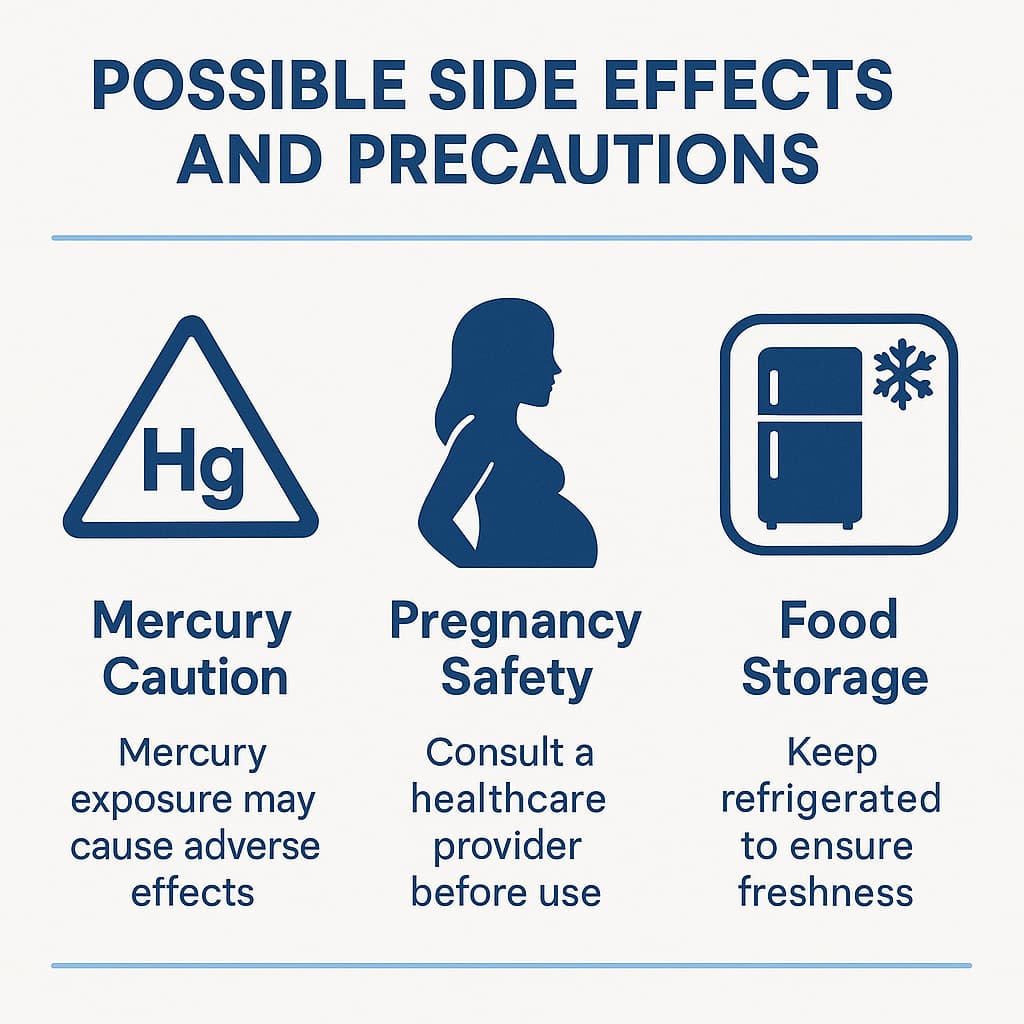
While salmon is widely recognized as safe and beneficial, responsible consumption is important for health transparency — a key YMYL standard.
Mercury and PCB Risks
Salmon is considered a low-mercury fish, especially compared to species like tuna or swordfish. However, trace levels can accumulate over time.
Choose wild-caught Alaskan salmon, which consistently shows the lowest contamination, according to the Environmental Defense Fund.
Tip: Limit consumption of other high-mercury seafood if you eat salmon frequently.
Safe Weekly Limits
- Adults: 2–3 servings per week (total 8–12 ounces).
- Children (ages 2–8): 1–2 servings per week, each 2–4 ounces.
These limits ensure safe intake of beneficial omega-3s without exceeding contaminant thresholds.
Fish Allergy Caution
Some individuals may experience allergic reactions to salmon, characterized by hives, swelling, or breathing difficulty.
Those with a known fish allergy should avoid salmon and consult an allergist for personalized advice.
Pregnancy and Breastfeeding Safety
Salmon is one of the safest fish choices for pregnant and breastfeeding women due to its low mercury content and high DHA levels, which support fetal brain and eye development.
Recommendation: Eat 2–3 servings per week of cooked salmon and avoid raw or undercooked fish (e.g., sushi) to reduce the risk of bacterial infection.
Official guidance: FDA Fish Advice for Pregnant and Breastfeeding Women (2024)
Farmed vs. Wild Differences
Farmed salmon may contain more omega-6 fatty acids and higher sodium levels due to feed differences.
Opt for wild-caught or responsibly farmed salmon with sustainability certifications like Marine Stewardship Council (MSC) or Aquaculture Stewardship Council (ASC) to ensure purity and environmental responsibility.
Frequently Asked Questions (FAQ)
1. Is salmon safe to eat daily?
Yes — daily consumption is generally safe if portion sizes are moderate (3–4 oz) and fish sources are low in mercury. Rotate with other protein sources for dietary balance.
2. What’s the healthiest type of salmon?
Wild-caught Alaskan or Sockeye salmon is considered the healthiest, offering higher omega-3 levels and fewer contaminants than farmed varieties.
3. Is canned salmon nutritious?
Absolutely. Canned salmon retains protein, calcium (from bones), and omega-3s. Choose varieties packed in water or olive oil and labeled “wild-caught.”
4. How do I store fresh salmon safely?
Keep refrigerated below 40°F and cook within 1–2 days. For long-term storage, freeze at 0°F (-18°C) and consume within 3 months.
5. Can salmon help with weight loss?
Yes — salmon promotes satiety, stabilizes blood sugar, and supports fat metabolism due to its high protein and omega-3 content.
6. Can pregnant women eat salmon?
Yes — it’s encouraged. Choose low-mercury, fully cooked salmon for brain-supporting DHA benefits.
7. Does farmed salmon have fewer nutrients?
Farmed salmon may have slightly less omega-3 and more omega-6, but remains nutritious if sustainably farmed.
Conclusion
Salmon stands out as one of the most nutrient-dense foods on Earth, offering remarkable benefits for heart, brain, skin, and immune health. Its balance of omega-3 fats, complete protein, and essential vitamins makes it a powerful ally in preventing chronic diseases and supporting overall wellness.
Incorporate salmon into your meals twice weekly for a stronger heart, sharper mind, and longer life. Choose wild-caught sources when possible, cook it gently, and enjoy it as part of a balanced, whole-food diet.
References
- American Heart Association – Fish and Omega-3 Fatty Acids: https://www.heart.org/en/healthy-living/healthy-eating/eat-smart/fats/fish-and-omega-3-fatty-acids
- U.S. Food and Drug Administration (FDA) – Advice About Eating Fish (2024): https://www.fda.gov/food/consumers/advice-about-eating-fish
- Cleveland Clinic – Health Benefits of Salmon: https://health.clevelandclinic.org/salmon-benefits
- National Institutes of Health (NIH) – Vitamin D Fact Sheet for Health Professionals: https://ods.od.nih.gov/factsheets/VitaminD-HealthProfessional/
- U.S. Department of Agriculture (USDA) – FoodData Central (Salmon Nutrition Profile): https://fdc.nal.usda.gov/
